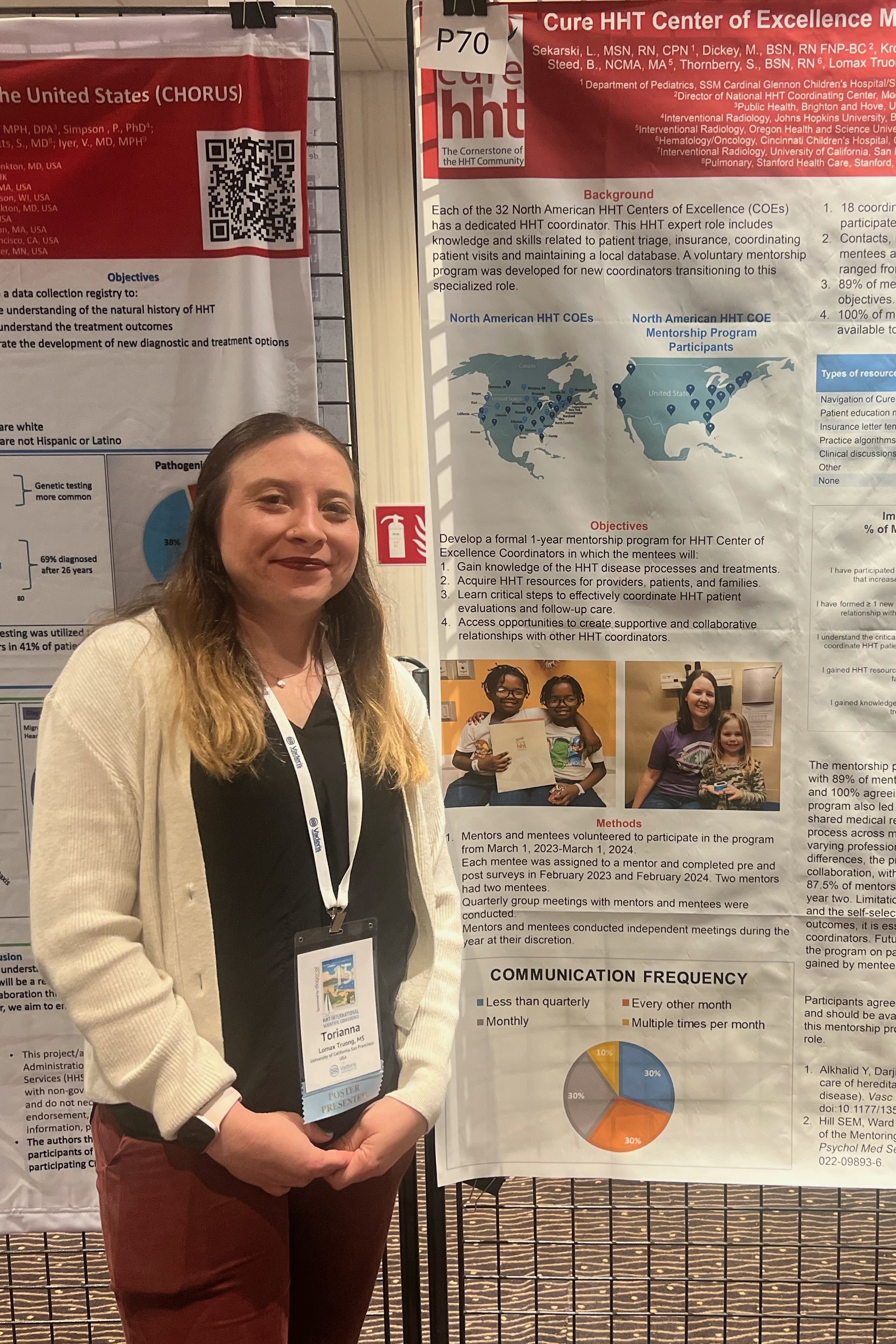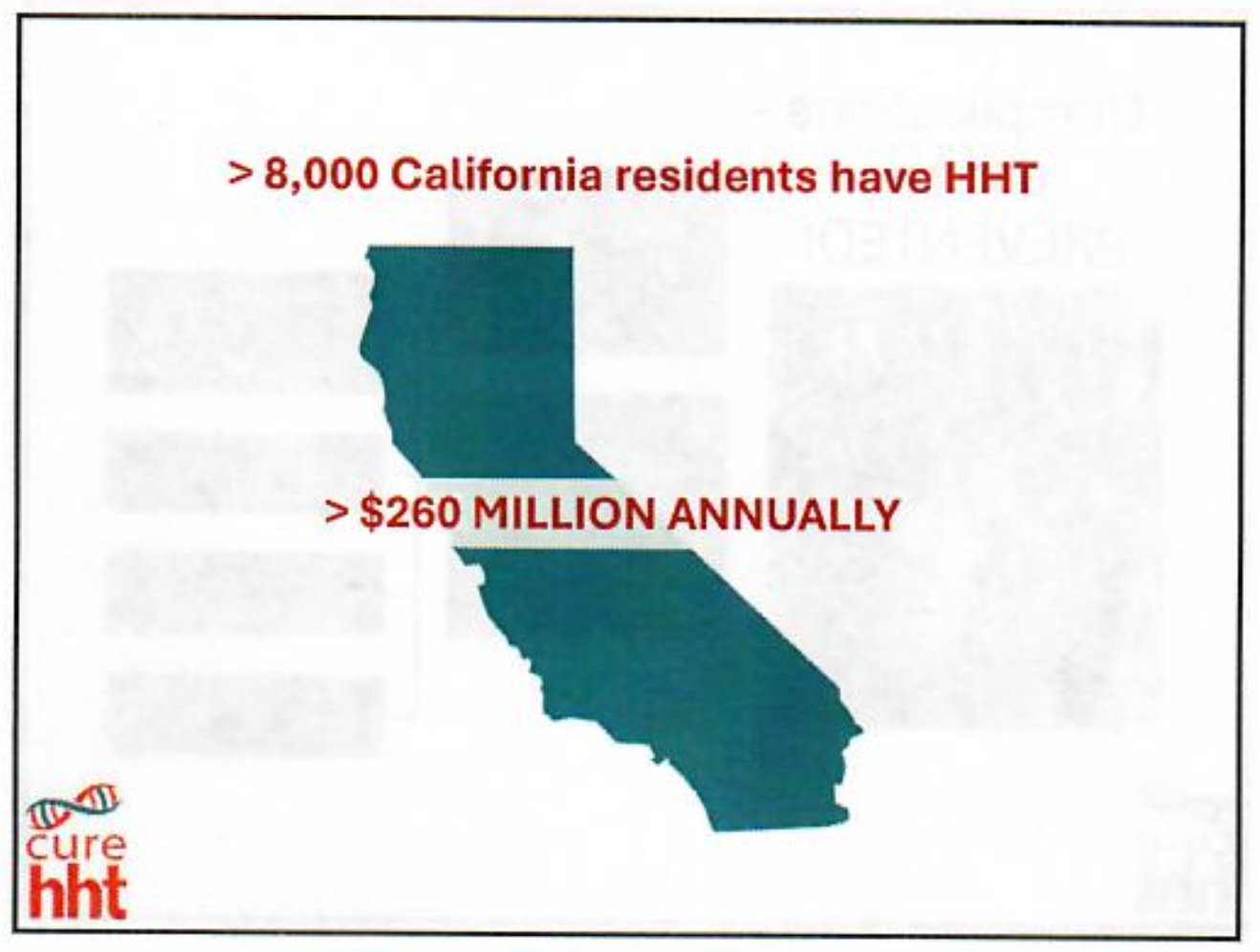Care Coordinators Advocate for HHT
Tori Lomax Truong presents the poster Cure HHT Center of Excellence Mentorship Program
Toriana Lomax Truong, patient care coordinator for the UCSF HHT Center of Excellence, presented three posters at the 15th HHT International Scientific Conference, in Mandelieu-la-Napoule, France. This gathering of HHT centers worldwide showcased the latest advances in research and treatment for this disorder, which effects many people but is often challenging to diagnose. Only 10% of affected individuals have an HHT diagnosis according to the nonprofit Cure HHT.
Hereditary Hemorrhagic Telangiectasia (HHT), a genetic disorder affecting blood vessels, affects approximately 1 in 5,000 people worldwide. Symptoms can vary widely, but often include frequent nosebleeds, skin lesions, and internal organ malformations. It takes an average of 27 years for an HHT patient to be diagnosed. Early diagnosis is key to preventing adverse outcomes due to brain and lung arterial venous malformations (AVM). There are four dedicated HHT centers in California and UCSF’s is one of the nation’s oldest, certified in 2014 as the first in California.
The first, published in the American Journal of Neruoradiology, described the study streamlining imaging protocols to detect AVMs.
Another ongoing UCSF project at the SF VA aims to create a single MRI study to look for abnormal blood veingrowth in a variety of potential locations across the body. This would greatly reduce the burden on both patients and healthcare systems, reducing the number of scan visits required.
Image by Cure HHT “HHT on Capitol Hill Day”
“Being able to attend conferences like this helps us continue to share important research abroad and gives an opportunity to learn more about the nuances of this complex disorder,” said Lomax Truong. “Because staff members like me are often the first person a patient speaks with when they contact an HHT center, having the knowledge to answer some of their initial questions and ease some fears before they see a physician is very valuable, especially when you’re dealing with a disorder that has a lot of unknown variables that are still yet to be discovered.”
This is not the first time Lomax Truong has stepped forward to advocate for HHT research. Earlier this year, she traveled to Washington, DC with Cure HHT, a project of HHT Foundation International, for HHT on Capitol Hill Day in a successful effort to secure funding for full-time patient care coordinators at other HHT Centers in the US.
Lomax Truong is thankful that she had this opportunity to represent UCSF’s HHT Center of Excellence, “I’m very grateful to be a part of these programs as an administrator. These experiences both help me enjoy my job more and enable me to provide better care for our patients.”
Tori Lomax Truong and fellow coordinators at the HHT ISC
